Impact of prolonged exposure to occasional and regular waterpipe smoke on cardiac injury, oxidative stress and mitochondrial dysfunction in male mice
- PMID: 38370014
- PMCID: PMC10869456
- DOI: 10.3389/fphys.2024.1286366
Impact of prolonged exposure to occasional and regular waterpipe smoke on cardiac injury, oxidative stress and mitochondrial dysfunction in male mice
Abstract
Regular waterpipe smoking (Reg-WPS) is well recognized for its deleterious effect on the heart. However, there is a paucity of experimental studies on the impact of occasional waterpipe smoking (Occ-WPS), also known as nondaily smoking, versus Reg-WPS on cardiac homeostasis, and the mechanisms underlying these effects. Hence, we aimed, in the present study, to investigate the effect of Occ-WPS (30 min/day, 1 day/week) versus Reg-WPS (30 min/day, 5 days/week) for 6 months on systolic blood pressure (SBP), cardiac injury, oxidative markers, chemokines, proinflammatory cytokines, DNA damage and mitochondrial function compared with air (control) exposed mice. Our results show that SBP was increased following exposure to either Occ-WPS or Reg-WPS compared with air-exposed mice. Moreover, we found that only Reg-WPS induced a significant elevation in the levels of troponin I, brain natriuretic peptide, lactate dehydrogenase, and creatine phosphokinase. However, the atrial natriuretic peptide (ANP) was significantly increased in both Occ-WPS and Reg-WPS groups. Compared with air-exposed mice, the levels of lipid peroxidation, reduced glutathione and monocyte chemoattractant protein-1 were only significantly augmented in the Reg-WPS. However, catalase, superoxide dismutase, and CXCL1 were significantly increased in both Occ-WPS and Reg-WPS. The concentrations of the adhesion molecules E-selectin, vascular cell adhesion molecule-1, and intercellular adhesion molecule-1 were solely elevated in the heart of mice exposed to Reg-WPS. Similarly, the concentrations of interleukin-1β and tumor necrosis factor α were only significantly augmented in the Reg-WPS. However, both Occ-WPS and Reg-WPS triggered significant augmentation in the levels of IL17 and DNA damage compared to the control groups. Furthermore, while Occ-WPS induced a slight but statistically insignificant elevation in the concentrations of mammalian targets of rapamycin and nuclear factor erythroid-derived 2-like 2 (Nrf2) expression, Reg-WPS exposure increased their levels substantially, in addition to p53 and mitochondrial complexes II & III, and IV activities compared with air-exposed mice. In conclusion, our findings show that while the long-term Occ-WPS exposure induced an elevation of SBP, ANP, antioxidant enzymes, IL17, CXCL1, and cardiac DNA damage, Reg-WPS exposure was consistently associated with the elevation of SBP and occurrence of cardiac damage, inflammation, oxidative stress, DNA damage and mitochondrial dysfunction.
Keywords: cardiac damage; inflammation; occasional; regular; waterpipe smoke.
Copyright © 2024 Hamadi, Al-Salam, Beegam, Zaaba, Elzaki and Nemmar.
Conflict of interest statement
The authors declare that the research was conducted in the absence of any commercial or financial relationships that could be construed as a potential conflict of interest. The author(s) declared that they were an editorial board member of Frontiers, at the time of submission. This had no impact on the peer review process and the final decision.
Figures



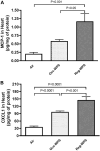
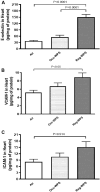
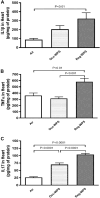

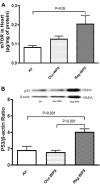

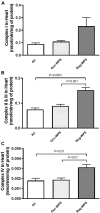

References
-
- Alarabi A. B., Karim Z. A., Ramirez J. E. M., Hernandez K. R., Lozano P. A., Rivera J. O., et al. (2020). Short-term exposure to waterpipe/hookah smoke triggers a hyperactive platelet activation state and increases the risk of thrombogenesis. Arteriosclerosis, thrombosis, Vasc. Biol. 40 (2), 335–349. 10.1161/ATVBAHA.119.313435 - DOI - PMC - PubMed
-
- Alavi S. S., Joukar S., Rostamzadeh F., Najafipour H., Darvishzadeh-Mahani F., Mortezaeizade A. (2021). Involvement of sirtuins and klotho in cardioprotective effects of exercise training against waterpipe tobacco smoking-induced heart dysfunction. Front. physiology 12, 680005. 10.3389/fphys.2021.680005 - DOI - PMC - PubMed
LinkOut - more resources
Full Text Sources
Research Materials
Miscellaneous

